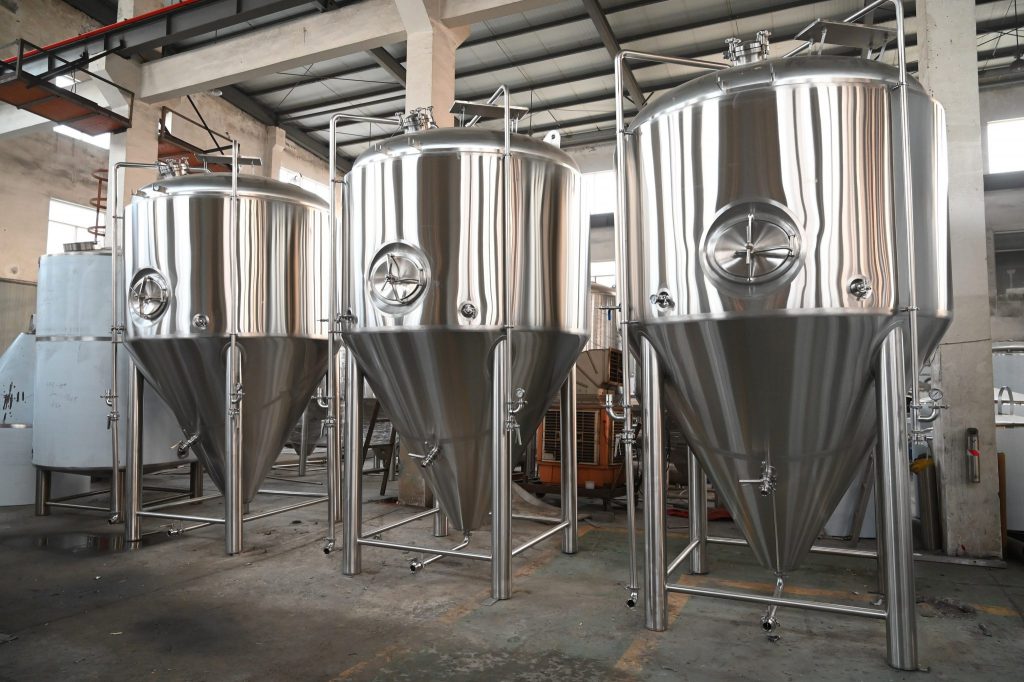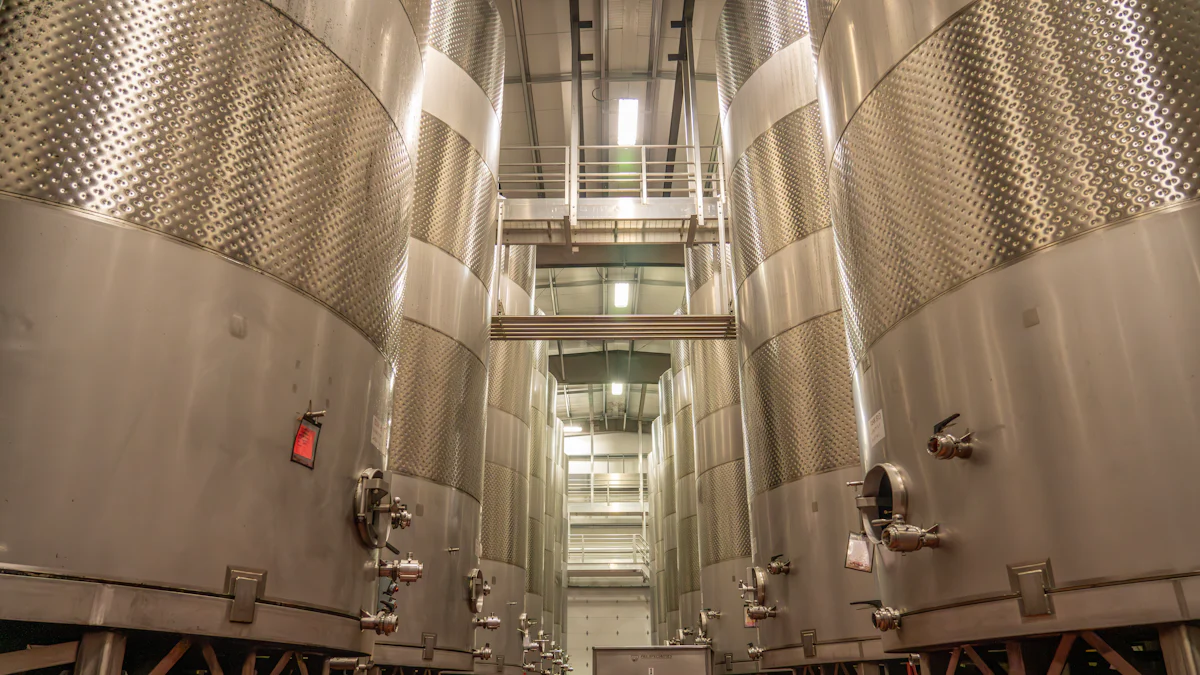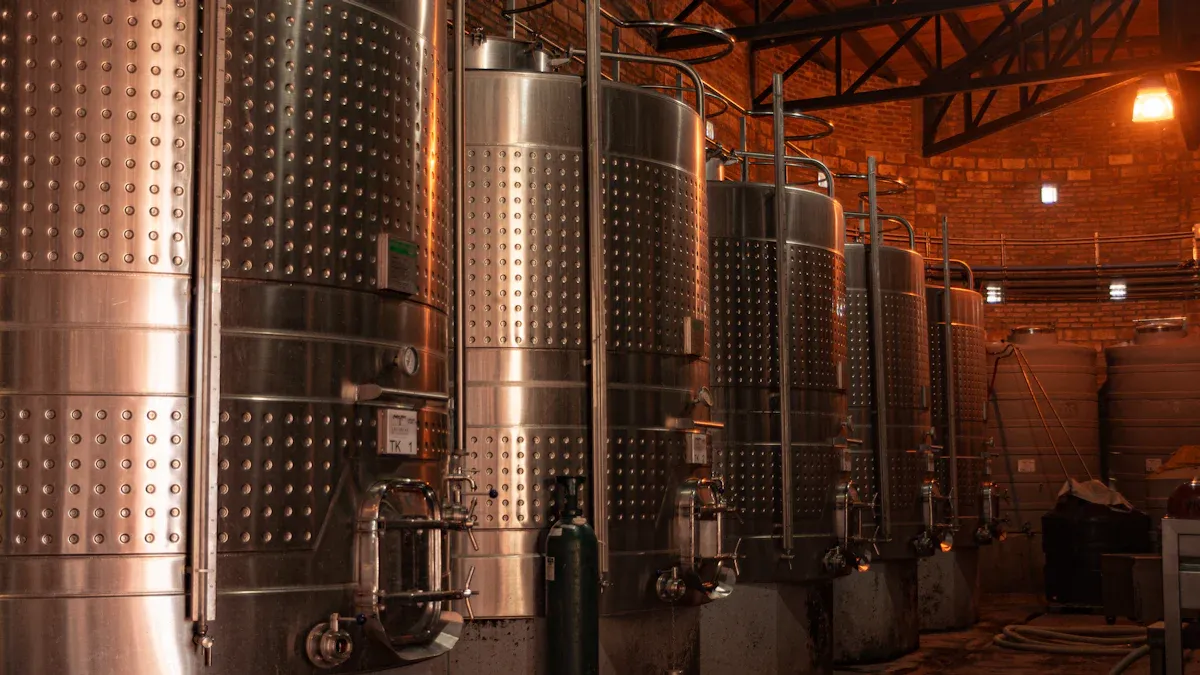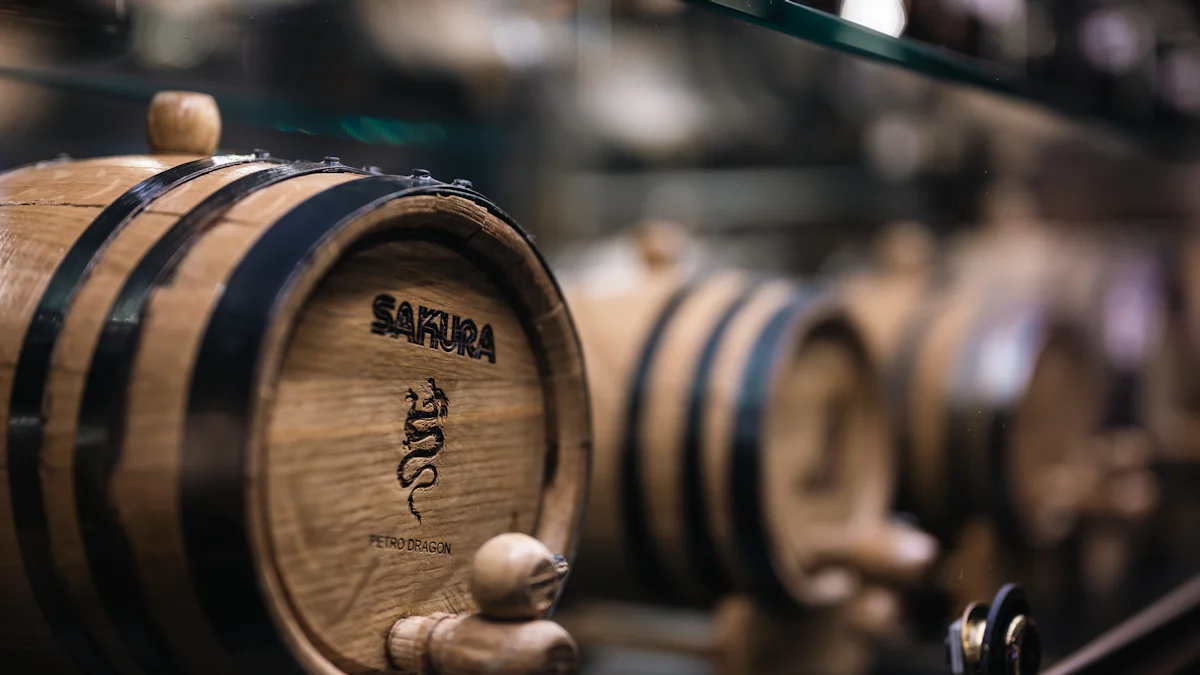Wine fermentation tanks and fermentation tanks used in brewing (such as beer fermenter tanks) serve similar purposes but have some key differences due to the distinct characteristics of the beverages being produced. Here’s a comparison between wine fermentation tanks and fermentation tanks used in brewing:

1.Wine Fermentation Tanks:
Material: Wine fermentation tanks are typically made of stainless steel or oak, with stainless steel being more common. Oak tanks are often used for specific wine styles or for imparting unique flavors during fermentation and aging.
Design: Wine tanks are designed to allow for gentle extraction of flavors, colors, and tannins from grape skins and other solids. Some tanks have temperature control features to regulate fermentation temperatures.
Fermentation Process: Wine fermentation involves the conversion of grape sugars into alcohol by yeast. The fermentation process for wine is generally slower and takes longer compared to beer, often spanning several weeks or even months.
Yeast Management: In winemaking, natural or selected wine yeast strains are used to ferment grape juice. Specialized nutrients may be added to support the yeast during fermentation.
Punchdowns and Pumpovers: During red wine fermentation, cap management techniques such as punchdowns (pushing the grape solids down into the liquid) or pumpovers (pumping liquid over the cap) are commonly used to enhance color and flavor extraction.
Aging: After fermentation, wine may be aged in the same tanks or transferred to barrels for further maturation. Some wineries use the same tanks for both fermentation and aging, while others have separate vessels for each stage.

2.Fermentation Tanks in Brewing (Beer Fermentation Tanks):
Material: Beer fermentation tanks are primarily made of stainless steel, which is easy to clean, sanitize, and maintain. Oak is not commonly used for beer fermentation.
Design: Beer fermenter tanks are designed to efficiently manage the fermentation process and control factors such as temperature and pressure. They often have cooling jackets to regulate the temperature of the fermenting beer.
Fermentation Process: Beer fermentation involves the conversion of malt sugars into alcohol and carbon dioxide by yeast. The fermentation process for beer is generally quicker compared to wine, often lasting a few days to a couple of weeks.
Yeast Management: Different yeast strains are used in brewing to achieve specific beer styles. Yeast management techniques, such as pitching rates and oxygenation, are crucial for achieving the desired flavors and aromas.
Additional Ingredients: In addition to water, malt, hops, and yeast, brewers may add various adjuncts and spices during fermentation to create unique flavors and aromas in beer.
Carbonation: Some beer styles require additional carbonation after fermentation, achieved either naturally through residual yeast activity or through forced carbonation using CO2.
Clarification and Filtration: While beer can be clarified and filtered in separate vessels after fermentation, some breweries use specialized conical tanks that allow for the separation of solids and sediment from the beer.
In summary, both wine fermentation tanks and fermentation tanks used in brewing are critical for the production of their respective beverages. They are designed and equipped to handle the unique characteristics and requirements of wine and beer fermentation processes, ensuring the production of high-quality products.



